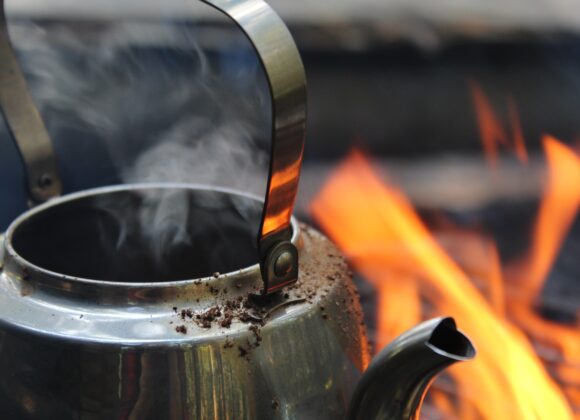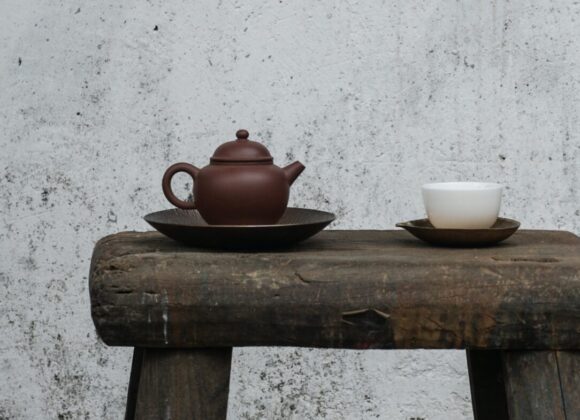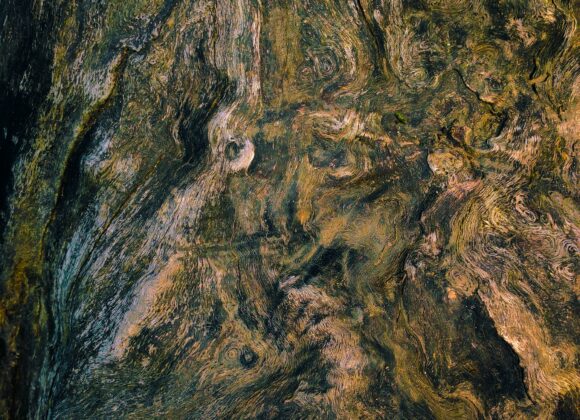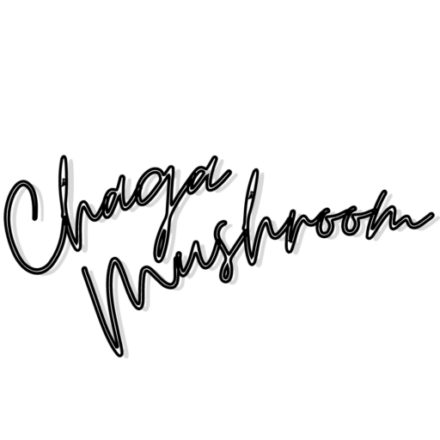The scientific name of the Chaga mushroom is Inonotus obliquus. It is not a new discovery early eastern Slavic populations in Europe used it to treat various internal and external issues. The fungus was used for stomachaches, kidney issues, lung problems, inflammation of the joints, and treating tumors. Chaga was also popular as a topical application for skin diseases. It was consumed in a form of tea to support immunity and health. So what part of Chaga should you use?
Unlike many other fungi, Chaga starts growing from the inside of a tree, instead of developing on the surface. As it grows and matures, it protrudes from the tree. You’ll be able to recognize the parasidic fungus by its dark, almost black exterior. Looking like something has burnt on the tree. From the inside, it’s a rich orange-brown color with a corky texture.
When talking about using Chaga, we mean the whole body of the fungus that has been cut off from the tree. It’s good to remove the bark, moss, and other foreign life from the exterior of the mushroom but most importantly make sure the sclerotium stays intact. This is where some of the most beneficial parts of Chaga are found. Chaga is safe to consume but would need to get processed.
Which part of Chaga is edible?
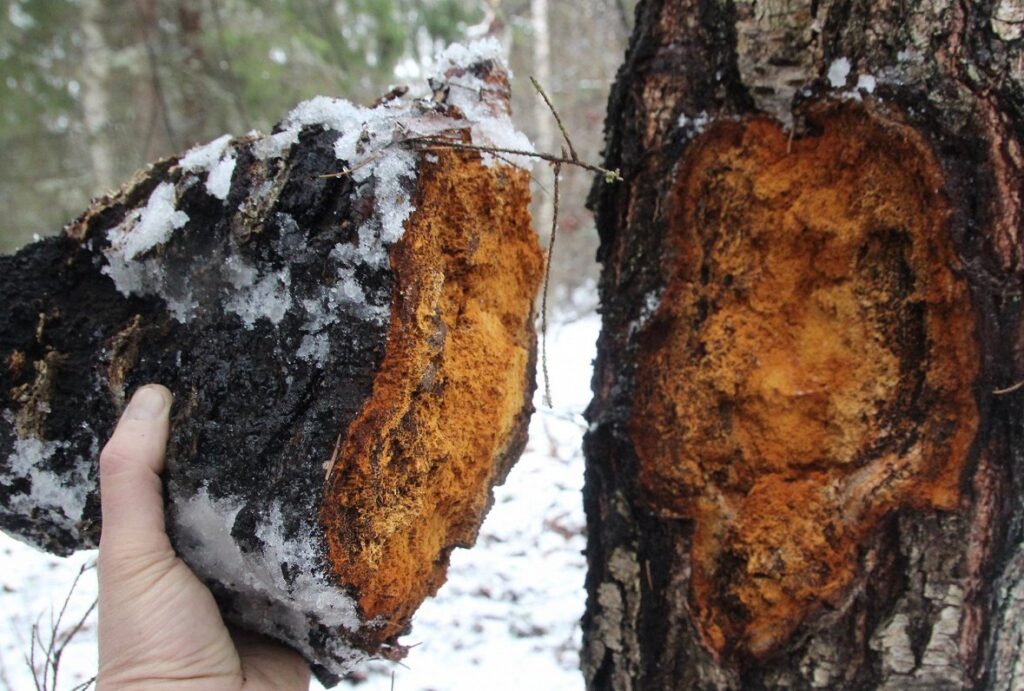
Chaga itself is a hard, dense polypore mass, that’s properties need to be extracted. The extraction requires prolonged simmering or soaking. This process makes the beneficial components bioavailable to the human body – meaning the body is able to absorb the nutrients.
When harvesting Chaga you’ll need to use a sharp knife or a little saw to cut it off without damaging the tree too much. It’s recommended to leave around 40% of the fungus on the tree for sustainable harvesting.
RELATED: How to harvest healthy Chaga
The most beneficial part of the fungus
Sclerotium is a precious part of the superfood, containing high amounts of melanin. Sclerotium is the dark black often burnt-looking outer crust of the fungus. Chaga is even known as one of the highest natural melanin sources in the world. It turns out that melanin has high antioxidant levels due to the number of polyphenols it contains, meaning consuming the fungus will keep your cells healthy. In fact, Chaga has the highest Oxygen Radical Absorbance Capacity (ORAC) score of any superfood, ranking three times higher on the scale than acai berries. The research studies are ongoing to discover whether these advantages can be used as the basis for establishing anti-cancer medications from “The king of mushrooms”.
RELATED: Health Benefits
That’s why we recommend our readers to buy Chaga chunks instead of powder. It’s easy to determine whether the sclerotium is still intact on the nuggets. Also don’t forget, the little chunks can be reused up to 6 times without losing their potency and long brewed tea from the nuggets tends to taste sweeter.
RELATED: Does Chaga increase melanin?
How to consume Chaga?
Raw Chaga technically does no harm but the tea should be brewed with dried chunks or powder. Moisture causes Chaga to lose its nutritional value once harvested from a tree. Being easily exposed to mold, you’ll need the fungus to be dried for a longer shelf-life, in order to risk any health hazards accruing from improper storage.
Chaga loses some of its nutrients when boiled but heating expands the cell walls of the Inonotus obliquus. Which allows for more nutrients to become bioavailable and produce a stronger healing potion. So the key to a good Chaga infusion is letting it simmer and steep over a longer period of time.
1. Hot water extraction│Chaga tea
Hot water extraction is the most common, easiest, and cheapest method to prepare it. Just like the traditional tea-making process, Chaga chunks or powder are steeped in hot water for a period of time, strained, and then drunk as tea.
When using this method, all the water-soluble components, such as the polyphenols and beta-glucans, will be present in the resulting extract. However, water-insoluble components, such as phytosterols, and betulinic acid will be missing. If somebody’s debating you on the taste of the beverage, keep in mind that a long brew tea from the nuggets tends to taste sweeter. We recommend you not to boil your Chaga.
RELATED: Does boiling Chaga ruin it?
2. Double Extraction│Chaga Tincture
Like with all tinctures, alcohol is used as the soaking agent for Chaga infusion. The mushroom is combined with alcohol and soaked for a set period of time, quite often months. Once it’s ready, the chunks or powder is removed, leaving a concentrated extract.
Generally, there is no heating or cooking involved. However, with fungi like Chaga, heating releases more nutrients and benefits. Recipes that include heating the fungus are considered stronger, more potent options. Heating expands the cell walls of the fungi, allowing for more nutrients to become bioavailable and create a stronger healing potion.
A tincture, otherwise known as an extract, is the most concentrated way to consume Chaga. It is best used at the onset of colds, during seasonal swings, or to combat recurring immune-system issues.
RELATED: Extract 101
How to find Chaga in the wild?
These mushrooms grow best on the outside of yellow and white birch trees. If you think that you’ve found Chaga on trees like oak, cherry, or poplar, you might be mistaking the fungus with a burl. Unfortunately, the Chaga’s that have been planted on other threes don’t seem to have the same health benefits as the ones growing on birch. Since a lot of the healthy compounds and nutrients it contains are produced from birch trees and their sap. Keep in mind that the fungus thrives in cold, damp conditions, and has a great tolerance for surviving hard winters.
It’s important you stay alert and extremely patient with lots of time for seeking, and exploring. Only one in 20,000 birch trees will be host to this polypore. It generally only grows on older trees. So, older growth forests are the best place to look.
Most often, it is found on Paper birch (Betula papyrifera), Yellow birch (Betula alleghaniensis), and Heart-leaved paper birch (Betula cordifolia). It is not always easy to spot due to its camouflage black surface, which blends in with the black and white birch bark. Make sure to keep your eyes off the ground as the most common height range between which Chaga likes to plant itself is 2-10 meters.
Note that Chaga is a type of fungi that reproduces thanks to spores, therefore once you’ve found one, it’s most likely that there are more growing in the area. The spores are microscopic biological particles, that travel through the air and determine the next suitable birch bark cracks where a new life cycle for the fungus begins.



